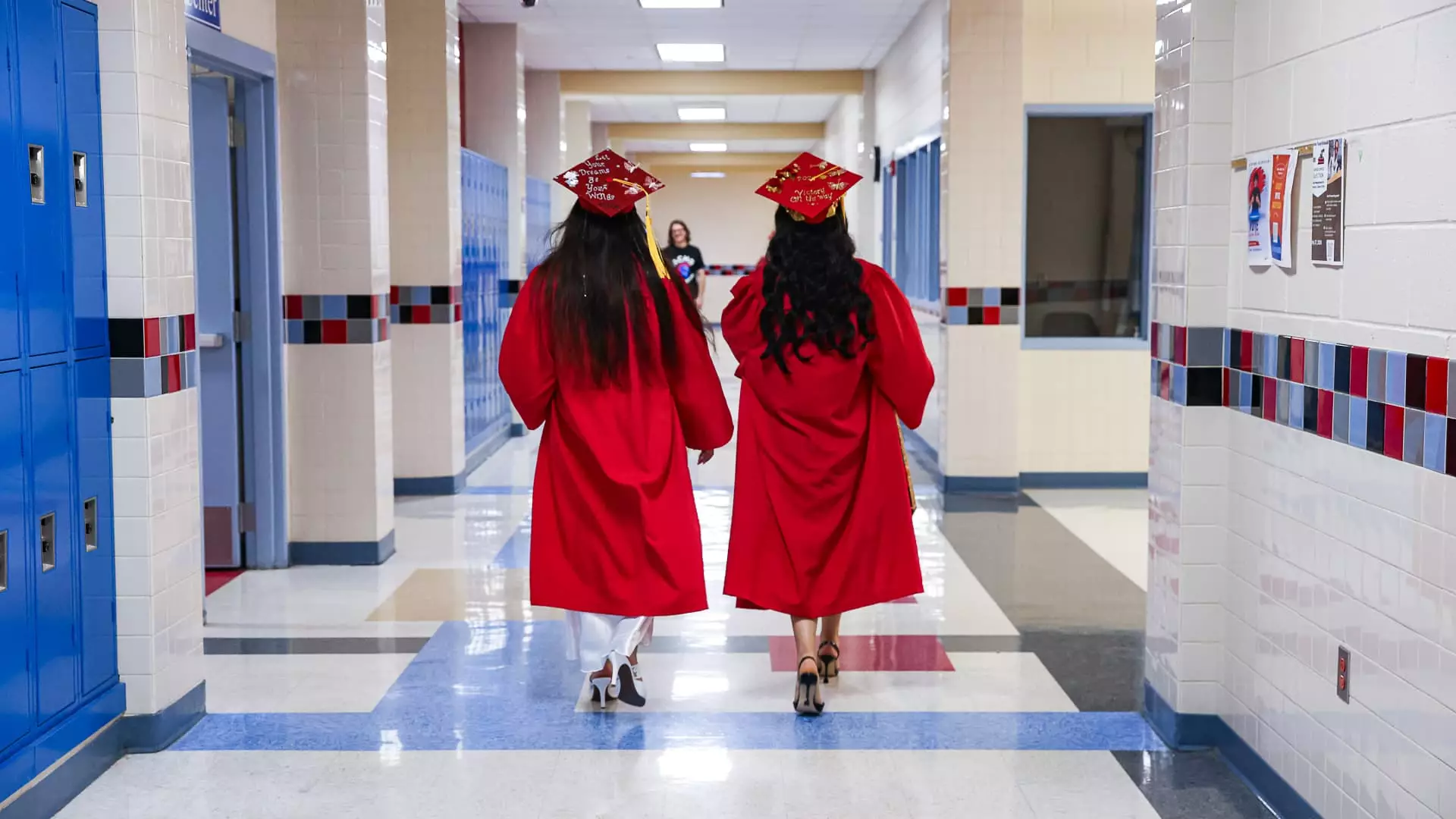As high school seniors brace themselves to embark on their college journeys, a harsh reality looms over them: student debt that often feels insurmountable. The U.S. Department of Education’s renewed push to collect on defaulted federal loans signals a troubling trend that exacerbates this crisis. With upwards of 42 million Americans already grappling with student loans, we’re not just seeing a generation caught in the grind of debt; we’re witnessing an entire cycle that perpetuates financial distress. As students prepare to take on new loans—averaging up to $40,000 for a bachelor’s degree—it’s essential to scrutinize the underlying causes of this pressing issue.
The Illusion of College Affordability
Many institutions tout higher education as a gateway to success, yet the exorbitant costs undermine this narrative. Tuition has witnessed a staggering 5.6% annual increase since 1983, far outpacing inflation and other living expenses. The burden on families has grown heavier, with parental contributions rising from 38% to nearly half of the college tab in just a decade. This shift makes one wonder: have colleges transformed into profit-driven enterprises masked as nonprofit institutions?
Michele Zampini from the Institute for College Access & Success encapsulates the sentiment that the right to education now comes with bleak financial consequences. She asserts, “Most people don’t have the money to make those payments out of pocket.” The expectation of students and families—despite a rising tide of indebtedness—may amount to unrealistic aspirations, driven by a myth of a “college-for-all” ideology.
A Culture of Debt
The sheer scale of the student loan burden is staggering, with total outstanding student debt exceeding $1.6 trillion. Families are entrapped in a culture of borrowing, forced to take out loans as a means to achieve what has become an illusory American Dream. College admission has become synonymous with financial jeopardy, not opportunity. The cycle repeats itself as fresh waves of students enter a system they are deeply underprepared for, both academically and financially.
The U.S. Secretary of Education, Linda McMahon, has underscored this deception in a recent Wall Street Journal op-ed, pointing fingers at institutions that make “empty promises.” The indictment of colleges profiting from federal loans paints a grim picture where students often graduate with six-figure debts while their alma maters accumulate multibillion-dollar endowments. It is a disheartening juxtaposition: the dream of education championed against classrooms filled with students facing crippling financial futures.
Political Abdication
Politics plays a significant role in the deterioration of college affordability and student loan crises. There has been a noticeable erosion of state funding for higher education, aggravating the financial burdens on students and enhancing tuition hikes. The surprising lack of political will to tackle the comprehensive issues of affordability speaks volumes about the priorities of policymakers. The division of funding has skewed dramatically over the past thirty years, burdening today’s students with costs that their predecessors never had to face.
As taxpayers, one has to question where the responsibilities lie. Shouldn’t there be more accountability from colleges that seemingly profit from students’ struggles? The commitment to education is in decline, as is evidenced by rising tuitions, while investments in academic institutions dwindle. Higher education should not be a commodity but a conduit of growth and opportunity, yet the current trajectory suggests otherwise.
The Call for Change
While higher education remains an objective for many, the system is damaging to those entering it. The current approach clearly favors institutional profit over student welfare. Without aggressive policy changes, systemic reforms, and a genuine effort from all stakeholders to address the deeper issues of college funding, we are merely perpetuating a cycle of despair. Education should empower, not enslave. Widespread reform is necessary—not just for the sake of both current and future students but for the integrity of the educational system itself. The cost of inaction is too high, and it is time for a more compassionate, pragmatic approach to college financing that prioritizes student livelihoods over profit margins.

